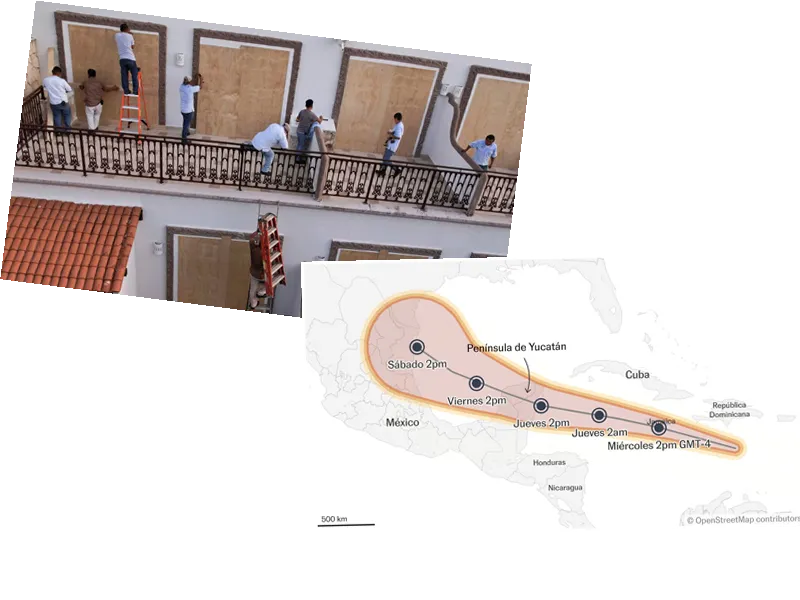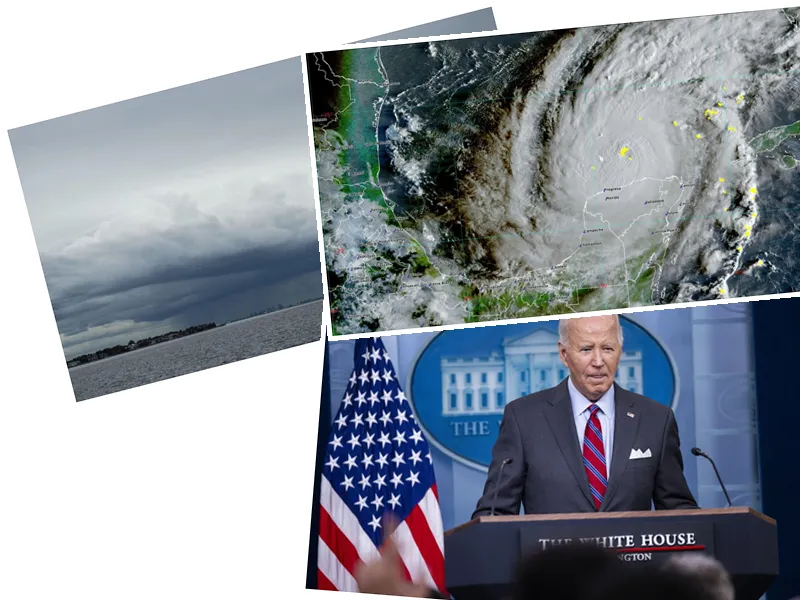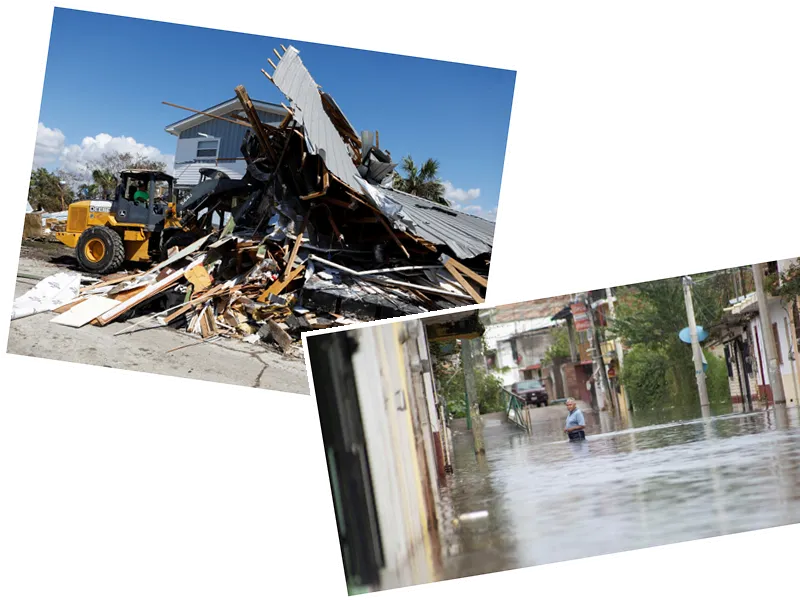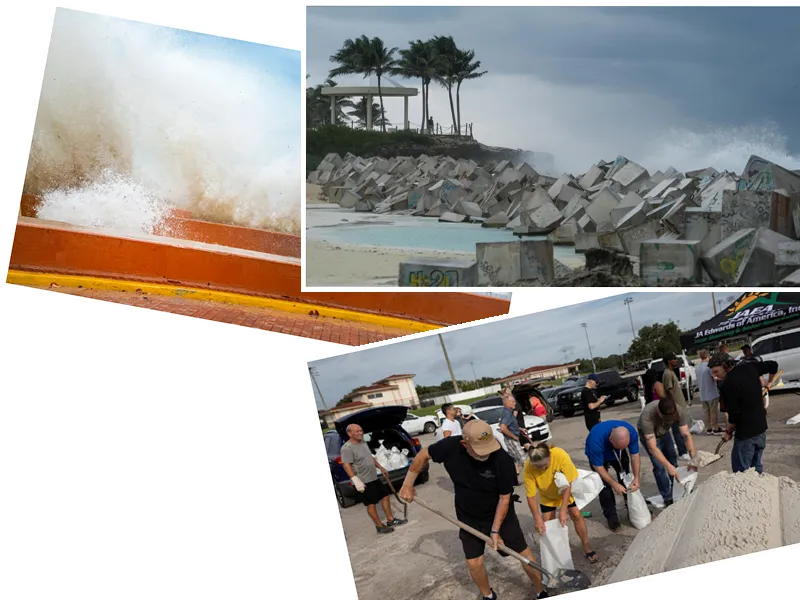Hurricane Beryl, a powerful tropical cyclone, is advancing through the Caribbean and is expected to make landfall on the Yucatán Peninsula in Mexico between Thursday night and early Friday morning. Initially a Category 5 hurricane, Beryl has been downgraded to a Category 4 storm, with sustained winds of 205 km/h. The storm has already impacted Jamaica and is now heading towards Mexico, where it could affect the states of Quintana Roo, Yucatán, and Campeche.
Authorities in Quintana Roo have issued an orange alert, indicating high danger, and are urging residents in low-lying areas to monitor water levels and prepare for evacuation. Governor Mara Lezama has advised people to close doors and windows, cut off gas and electricity supplies if necessary, and move to temporary shelters if their homes are unsafe. The state government has set up numerous shelters to accommodate evacuees.
The National Meteorological Service (SMN) predicts that Beryl will make landfall between Tulum, Quintana Roo, and Felipe Carrillo Puerto, Yucatán. The Mexican Army has activated emergency plans, providing shelters, food rations, water, and medical services. The storm is expected to bring intense rains, strong gusts of wind, and high waves to the region.
Beryl's impact is not limited to Mexico. The hurricane has caused significant damage in the Caribbean, including six confirmed deaths and several missing persons in Venezuela and Grenada. The storm has also caused power outages in Puerto Rico and heavy rains in Jamaica and the Cayman Islands. In Venezuela, President Nicolás Maduro confirmed the deaths and reported thousands of homes damaged or destroyed.
Cuban authorities have warned of heavy rains and storm surges as Beryl passes south of the island, while Colombia has issued a yellow alert for several departments. The National Hurricane Center (NHC) of the United States has warned that Beryl will bring 'life-threatening' winds and storm surge to Jamaica and the Cayman Islands.
As Beryl continues its path, it is expected to weaken but still pose a significant threat. After crossing the Yucatán Peninsula, the storm is forecast to move over the Gulf of Mexico and potentially make a second landfall between the states of Tamaulipas and Veracruz as a Category 1 hurricane. This trajectory highlights the ongoing risk and the need for continued vigilance and preparedness.
- Residents in affected areas are advised to stay informed through official channels and follow evacuation orders and safety guidelines issued by local authorities. It is crucial to have an emergency kit ready, including essential documents, medications, and supplies for at least 72 hours.
- The National Meteorological Service and the National Hurricane Center will continue to monitor Beryl's progress and provide updates. People in the storm's path should regularly check for new information and heed warnings to ensure their safety.
- The impact of Hurricane Beryl underscores the importance of disaster preparedness and the need for communities to have robust response plans in place. As climate change continues to influence weather patterns, the frequency and intensity of such storms are likely to increase, making it essential for governments and individuals to be proactive in their preparations.






